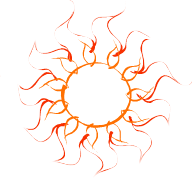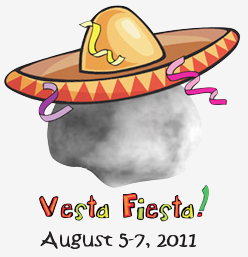Link to the NES Virtual Campus home page.
Author: John Entwistle
NES National Student Symposium Showcases Student Research
Students from across the nation will gather at NASA’s Kennedy Space Center in Florida May 4-7 for the NASA Explorer Schools National Student Symposium. Future leaders in science, technology, education and math, or STEM, will present their work to NASA scientists, engineers, fellow students and educators.
The competitively selected group of fourth through 12th-graders consists of 58 students and their teachers. The various student research projects were designed to improve learning and bolster interest in STEM disciplines.
The students were required to complete an original investigation focused on existing NASA missions or research interests. Students presented their work to experts at virtual regional symposia held January through March at NASA centers using the agency’s Digital Learning Network.
In addition to presenting their work at the national symposium, participants also will learn more about NASA’s research activities and exploration missions. Students will tour a variety of operational facilities at Kennedy, including the space shuttle launch complex, and participate in a webcase of a career panel featuring NASA scientists, engineers and specialists.
Congratulations to the students and schools attending the National Student Symposium:
|
|
|
|
|
|
|
|
|
|
|
|
|
|
|
|
|
|
|
|
|
|
|
|
|
|
|
|
|
|
|
|
|
|
|
|
|
|
|
|
|
|
|
|
|
|
|
|
|
|
|
|
|
|
|
|
|
|
|
|
|
|
|
|
|
|
|
|
|
|
|
|
|
|
|
|
|
|
|
|
|
|
|
|
|
|
|
|
|
|
|
|
|
|
|
|
|
|
NASA Features Earth Day Video Contest!
NES Gearing Up for the 2011-2012 School Year
NASA Explorer Schools will begin re-enrollment for the upcoming school year beginning on May 2. By re-enrolling, you will have continued access to engaging and exciting classroom materials from NES, including 20 new product modules for 2011-2012, and a fresh collection of NASA Now and live chat events planned for the coming school year.
NASA Now: Earth Day – Smog Bloggers

In this episode of NASA Now, Dr. Raymond Hoff, Director of the Joint Center for Earth Systems Technology and Director of Goddard Earth Science and Technology Center, discusses what smog is, how to access air quality information, and how our health and environmental can be affected by air quality.
The Smog Blog is a group of seven students, led by Dr. Hoff, who use LIDAR and NASA satellites to monitor our air quality each day. This team also uses ground-level data gathered by NASA, the Environmental Protection Agency, and the National Oceanic and Atmospheric Administration to give a daily report about U.S. air quality.
Link to the NES Virtual Campus home page.
NASA Now Minute: Earth Day — Smog Bloggers
Anderson and Tabor Develop and Share the Solar Sprint Activity. National Competition to Follow? Get in on the Fun!
 Richard Tabor, fourth-grade teacher, and Stephen Anderson, principal at Amerman Elementary School in Michigan, found a method encouraging fourth-grade students to think about multiple variables and stimulates their curiosity when an activity doesn’t come out as predicted. They introduced a “Solar Sprint” activity in which students design, test and race a solar-powered car built with LEGO bricks. They then presented one more challenge to their students: The winner of the Solar Sprint is not the fastest but, rather, the model that is most efficient, based on a ratio of speed to weight. The use of ratios simulates the actual work of scientists and engineers.
Richard Tabor, fourth-grade teacher, and Stephen Anderson, principal at Amerman Elementary School in Michigan, found a method encouraging fourth-grade students to think about multiple variables and stimulates their curiosity when an activity doesn’t come out as predicted. They introduced a “Solar Sprint” activity in which students design, test and race a solar-powered car built with LEGO bricks. They then presented one more challenge to their students: The winner of the Solar Sprint is not the fastest but, rather, the model that is most efficient, based on a ratio of speed to weight. The use of ratios simulates the actual work of scientists and engineers.Link to the NES Virtual Campus home page.
Opportunity for High School Students and Their Teachers to Participate in a Two-Semester Lunar Research Program for the 2011-2012 Academic Year

Link to the NES Virtual Campus home page.
Vesta Fiesta: August 5-7, 2011. Save the Date!
 Celebrate the beginning of Dawn’s year-long exploration of new worlds. After close to four years cruising at stunning speeds, the robotic spacecraft is catching up to its first destination in the main asteroid belt: Vesta. Don’t Dawn and Vesta deserve a fiesta?
Celebrate the beginning of Dawn’s year-long exploration of new worlds. After close to four years cruising at stunning speeds, the robotic spacecraft is catching up to its first destination in the main asteroid belt: Vesta. Don’t Dawn and Vesta deserve a fiesta?Link to the NES Virtual Campus home page.
Challenge Students' Creativity Using the Sun-Earth-Moon Model
.jpg) NASA Explorer Schools educator Cheryl May at Lebanon Middle School challenged her 7th-grade science and technology students by adding her own extensions to the Sun-Earth-Moon Model activity. In the activity, students create a model of the Earth, sun and moon system. Students observe the moon’s orbit of Earth simultaneously with Earth’s orbit of the sun. This is an effective way to model eclipses and the position of Earth, the moon and the sun during the moon’s phases.
NASA Explorer Schools educator Cheryl May at Lebanon Middle School challenged her 7th-grade science and technology students by adding her own extensions to the Sun-Earth-Moon Model activity. In the activity, students create a model of the Earth, sun and moon system. Students observe the moon’s orbit of Earth simultaneously with Earth’s orbit of the sun. This is an effective way to model eclipses and the position of Earth, the moon and the sun during the moon’s phases.Link to the NES Virtual Campus home page.
Climb on Board for a Fun-Filled Adventure
 NASA Explorer Schools educator Elizabeth Petry from Mack Benn Jr. Elementary School used NES resources to encourage her students to read and write. Students began their adventure by participating in a videoconference activity in which they explored the solar system. Afterward, students conducted research and prepared a fact to share about their planet as part of a Reader’s Theater activity. Petry showed the NASA Now program, “Reasons for the Seasons,” and arranged for students to participate in a NASA Digital Learning Network videoconference, Our Solar Neighborhood.
NASA Explorer Schools educator Elizabeth Petry from Mack Benn Jr. Elementary School used NES resources to encourage her students to read and write. Students began their adventure by participating in a videoconference activity in which they explored the solar system. Afterward, students conducted research and prepared a fact to share about their planet as part of a Reader’s Theater activity. Petry showed the NASA Now program, “Reasons for the Seasons,” and arranged for students to participate in a NASA Digital Learning Network videoconference, Our Solar Neighborhood.Link to the NES Virtual Campus home page.
